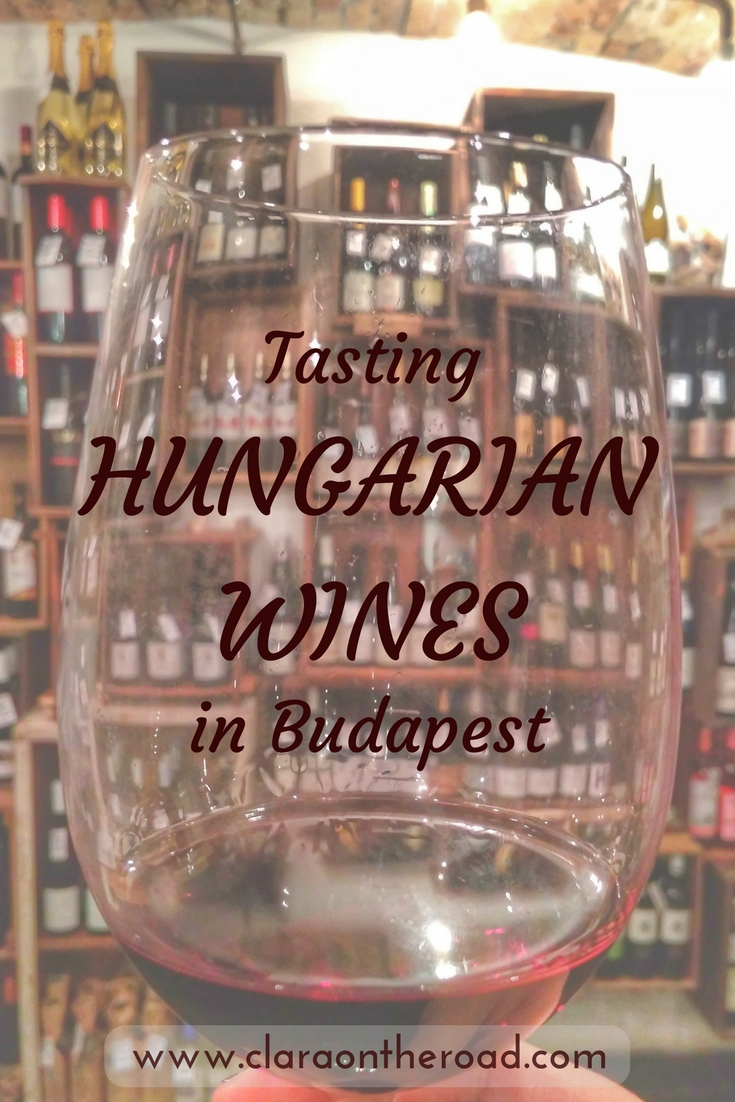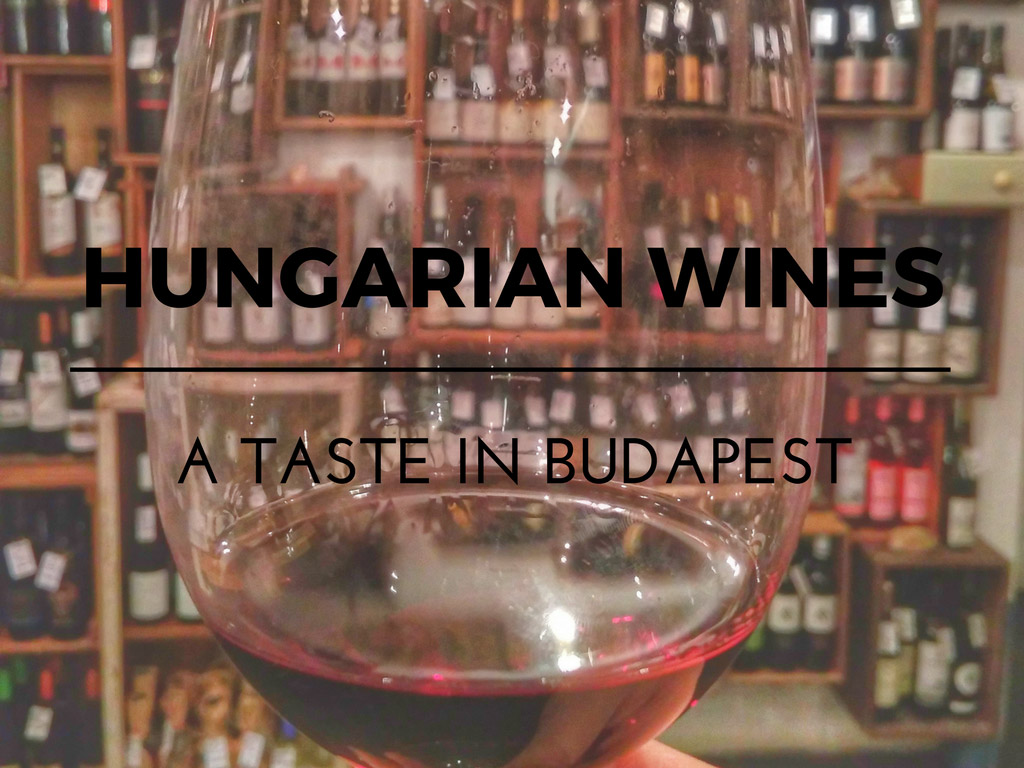How many of you have ever heard about Hungarian wines?
Let’s be honest, Hungarian wines are not famous at all. 🙂 Comparing to other European countries, wine production in Hungary is quite limited. Even so, Hungarian wines are actually very interesting not only in the aroma, taste and body, but also in their history, very linked to the territory.
Taste Hungary guided me in a interesting and engaging class about Essentials of Hungarian Wine, and I had the unique opportunity to fully immerse myself in the local wine tradition.

The experience with Taste Hungary
Taste Hungary was founded in 2008 with the intention to share the passion for Hungarian food and wine with curious travellers. For the same reason in 2014 The Tasting Table Budapest was opened, an independent wine shop and a tasting room where the class took place.
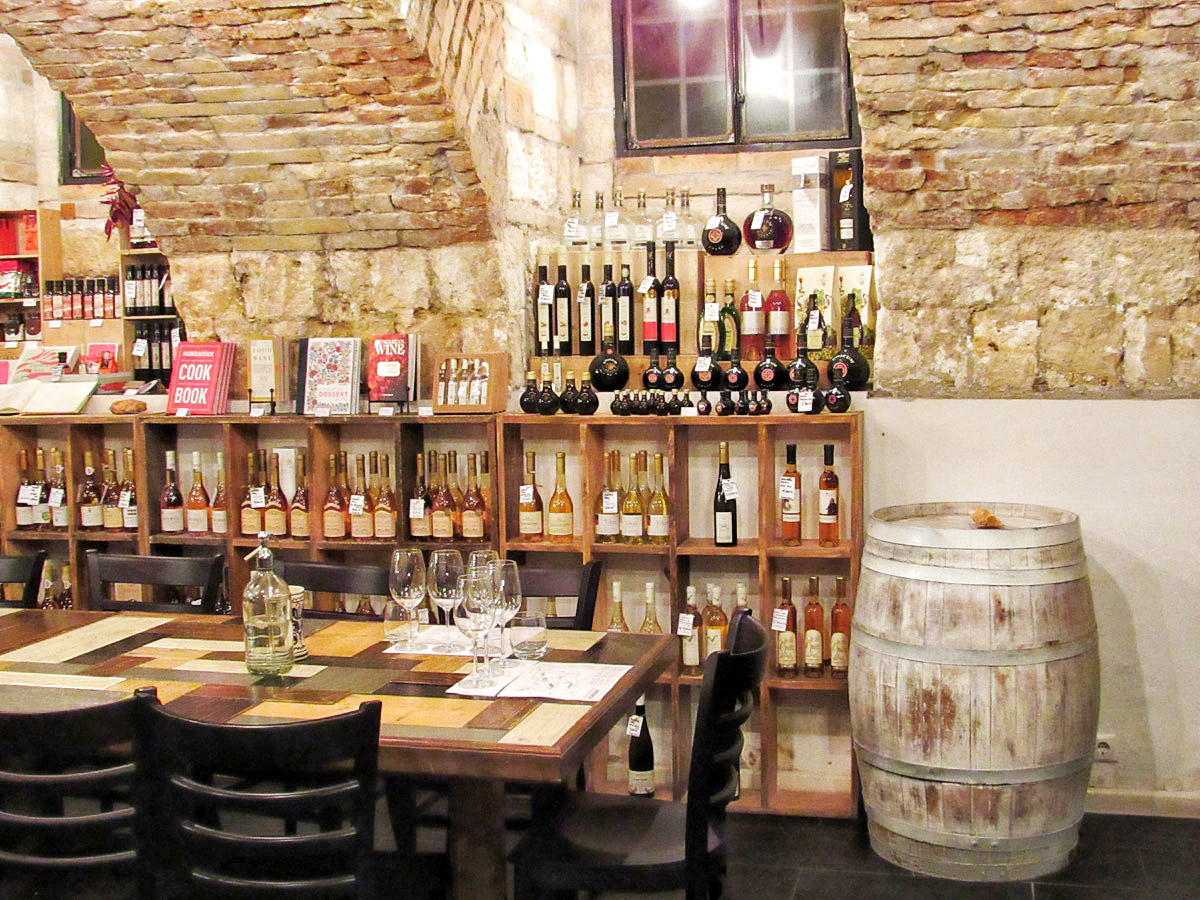
The location is super evocative: a vaulted cellar of a 19th century palace where cultural and educational events (such as dinners, wine flights and tastings) focused on the Hungarian gastronomic tradition are periodically organised. All the events are run by an expert, and I had the pleasure to learn from Anett, an incredibly prepared and nice wine expert.
What I learnt about Hungarian wines
This experience taught me so many things about Hungarian wines!
First of all, I discovered that on the entire Hungarian wine production, 70% concerns white wines, 20% red wines and 10% sparkling wines.
Then, I learnt that every single wine belongs to a specific Hungarian region, and every Hungarian region has some specific feature in its wine production.
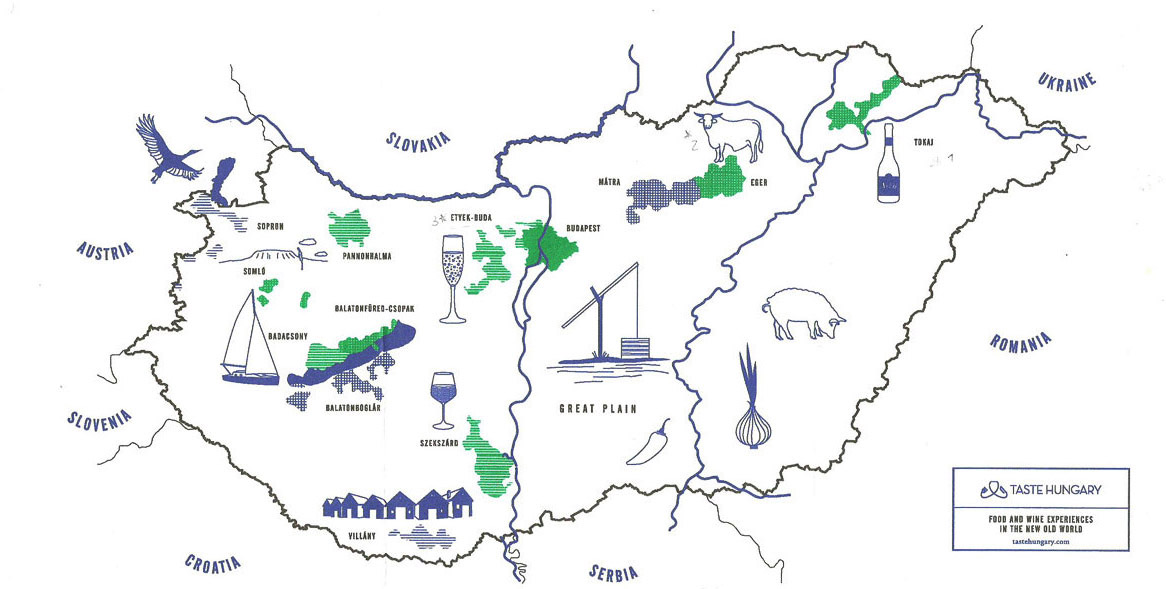
Tokaj, for example, has a long winemaking tradition that makes it the Hungary’s most important wine region; from Tokaj I tasted a Narancsi Furmint, a refreshing whine wine, and a 5 Puttonyos Aszú, a delicious dessert wine, perfect also with foie gras or blue cheese.
Eger region (the northeastern part of Hungary) is traditionally known for its “Bull’s Blood”, a blend of 3 to 6 red varietals, and I tasted a Rhapsody Bikavér (indeed, Bika means Bull, and Vér means Blood), but it also produces white wines, including a new blend called Egri Csillag (Stars of Eger), that I appreciated for its very aromatic smell and particular taste.
The region of Somló consists of just a volcanic hill, it’s the Hungary’s smallest wine region and it produces distinctive white wines. I had the chance to taste a Brut Classic Sparkling Wine NV, with a strong minerality deriving from the volcanic territory, and a Juhfark (literally Sheep Tale), my favourite among all the Hungarian wines I tasted, thanks to a quite smoky aroma that makes it perfect for special occasions. “Love it or hate it”, Anett said. 🙂
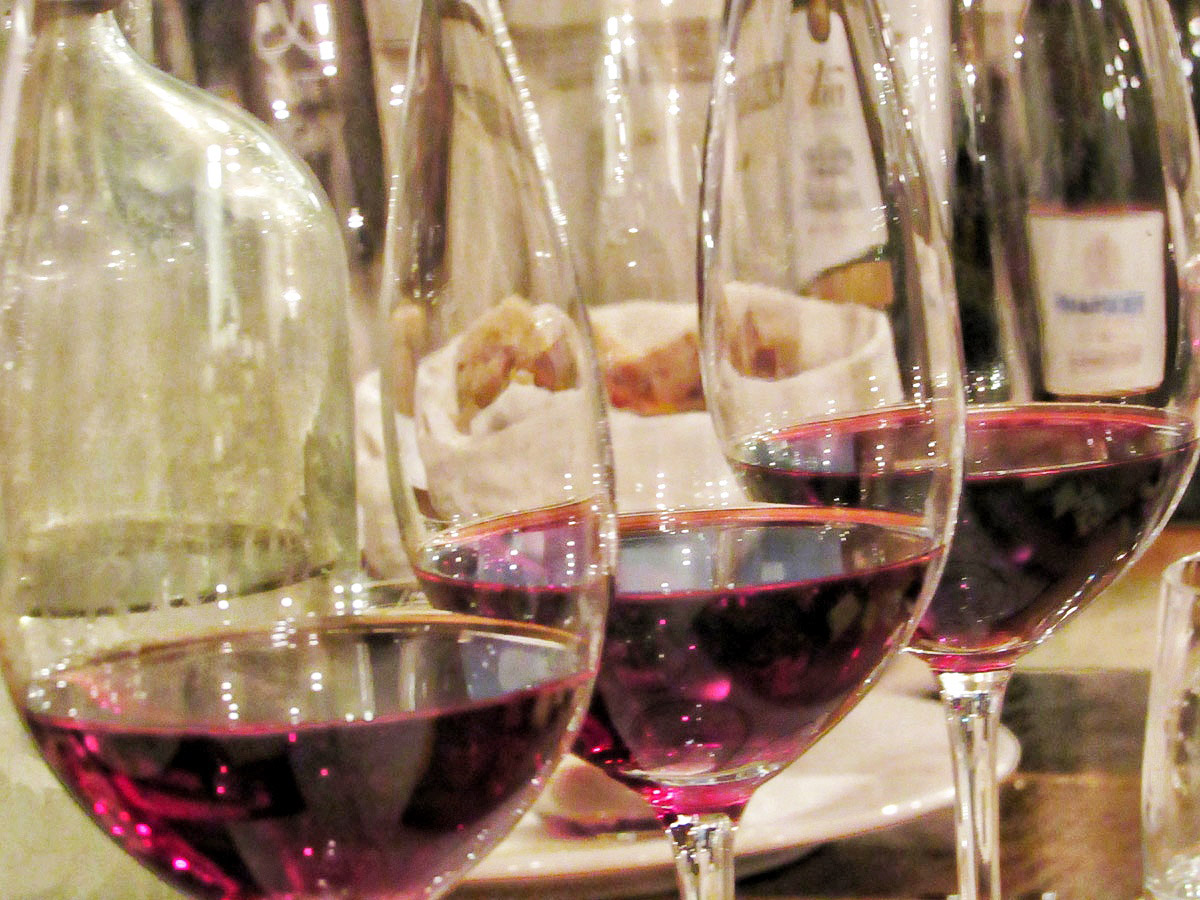
Then, Villány region produces many variety of mostly red wines, included cabernet franc that is particularly good in that area and that became the region’s flagship wine. I tasted a 2013 Villány Franc and I can confirm: it is simply delicious, with coffee and dark chocolate notes.
In Szekszárd region excellent and elegant wines are produced, especially cabernet franc, merlot and kékfrankos varieties. I tasted a 2015 Hidaspetre Kekfrancos and I was surprised by its complex, elegant and sophisticated flavours.
During the Taste Hungary experience, I sipped eight different wines, each of them was from a different area of Hungary and each of them had its own peculiarity in the taste, the aroma, the body and the finish. They served some Hungarian cheese and salami too, to better appreciate the wines, and it was interesting to notice how a wine taste could change according to the food.
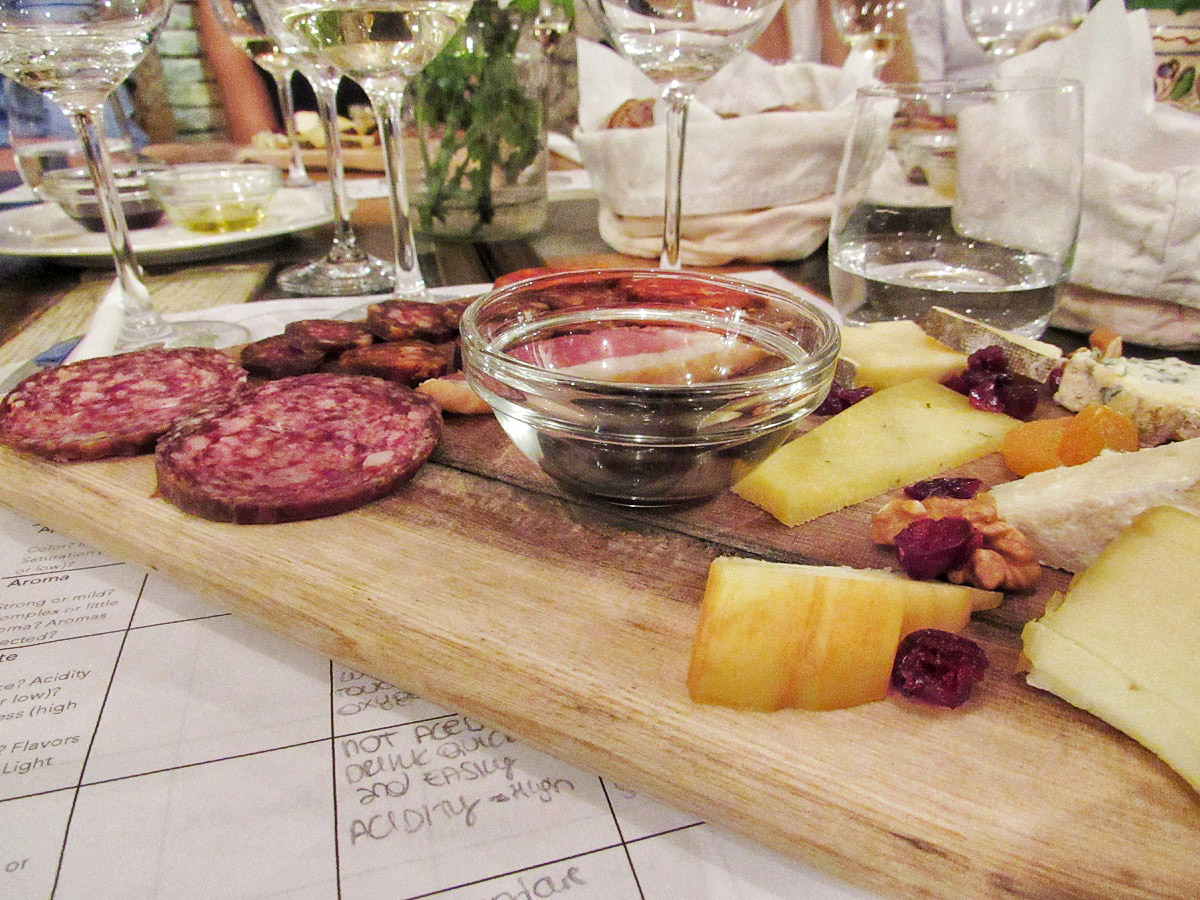
The Essentials of Hungarian Wines experience was incredibly instructive, and it was a real surprise to reach such a deeply knowledge about wines in a very friendly and nice atmosphere.
I honestly think that Taste Hungary’s events are unique opportunities to further explore Hungarian traditions, and I absolutely recommend you to take part to some of the interesting tours.
Follow my blog on Bloglovin
